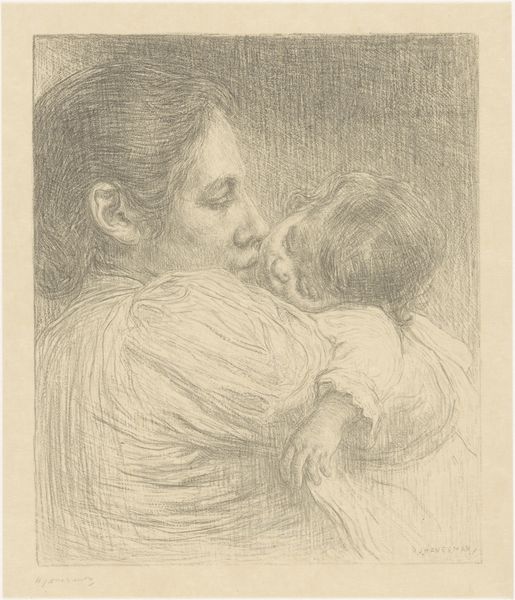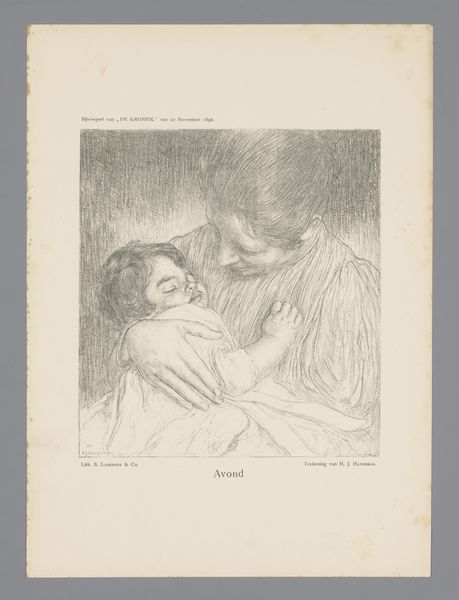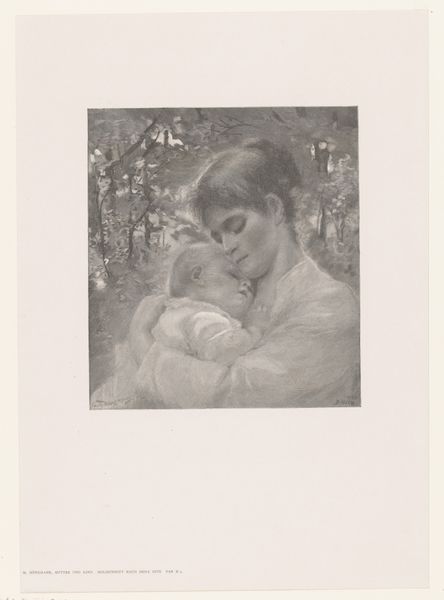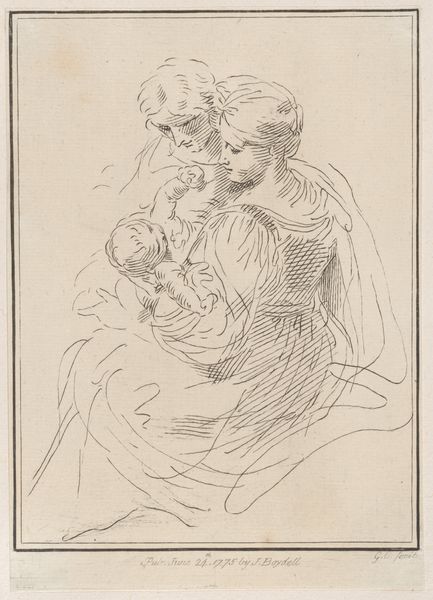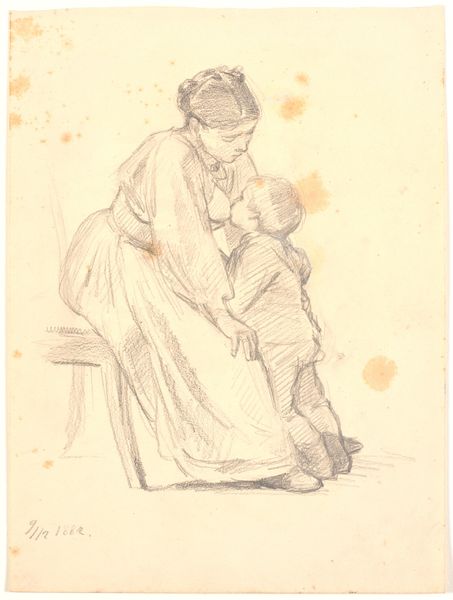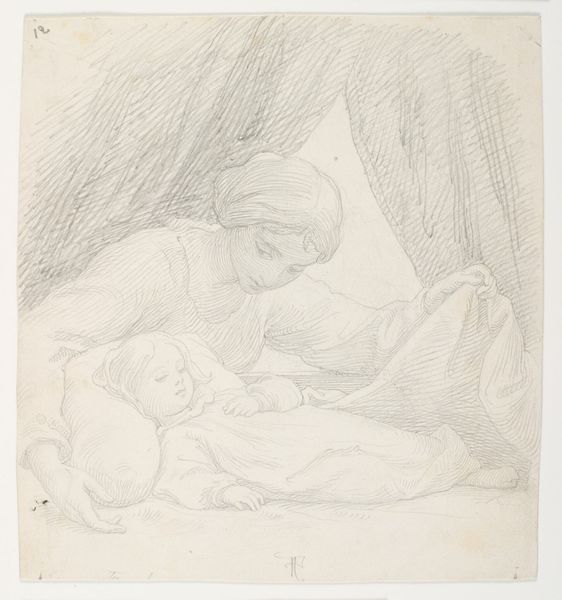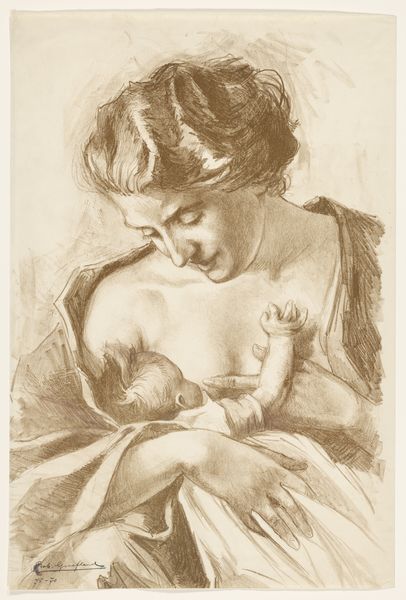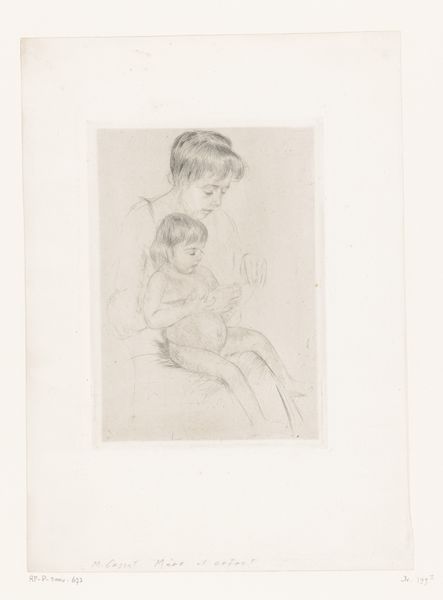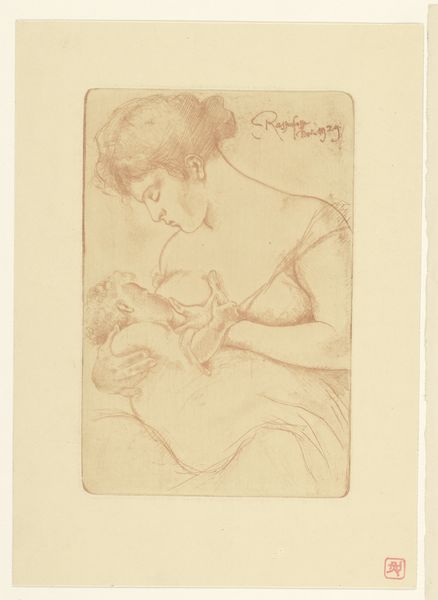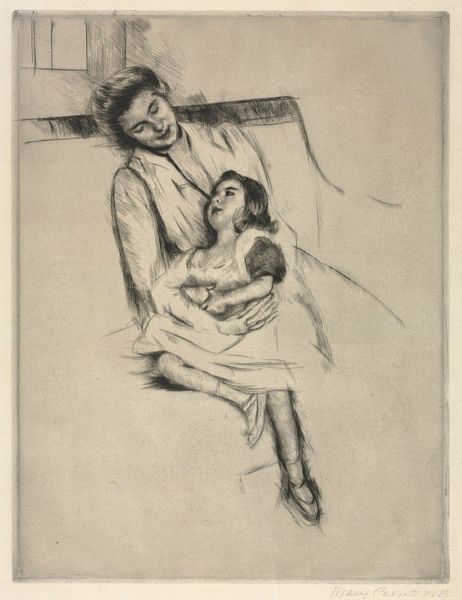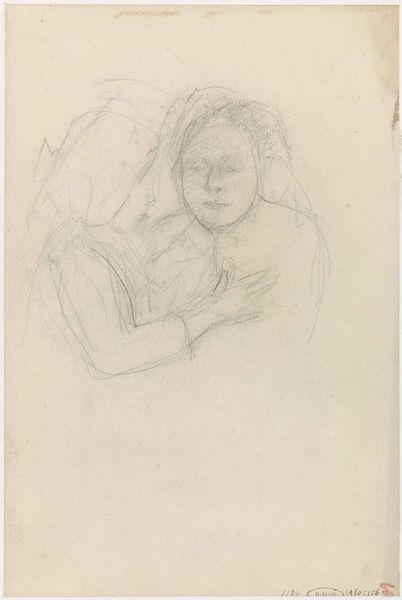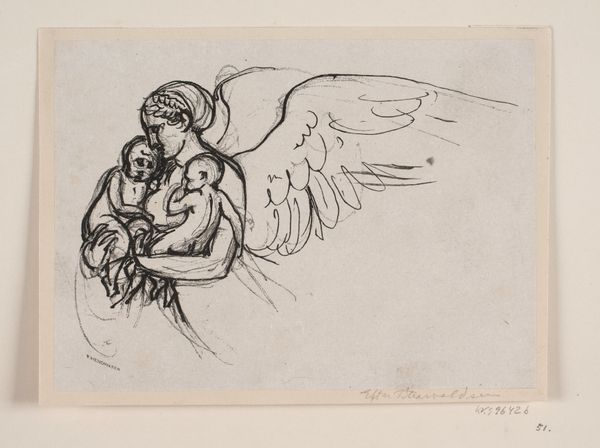
drawing, pencil
#
portrait
#
drawing
#
pencil drawing
#
intimism
#
pencil
#
symbolism
#
portrait drawing
Dimensions: height 272 mm, width 249 mm
Copyright: Rijks Museum: Open Domain
Curator: Oh, it's tenderness embodied. The texture alone feels soothing. Editor: That’s a wonderful way to put it. This is "Avond," or "Evening," by Hendrik Johannes Haverman, created in 1896. It’s a pencil drawing, now residing here at the Rijksmuseum. The work is also noted for its influence by Intimism, a movement reflecting domesticity and quiet moments. What do you feel draws you into the scene so immediately? Curator: Absolutely the embrace. It radiates warmth. See how the mother's gaze is so focused, protective. The soft gradations in the pencil work evoke a palpable sense of comfort. Editor: Yes, it captures the quiet, hallowed domestic space that was gaining attention amongst the middle class. This intimate portrayal moves away from public, historical themes dominant in earlier art academies and caters to intimate and sensitive subjects. The lines around the hair and dress are sharp yet not constricting, but it gives definition without losing the serenity. Haverman was, in some ways, contributing to the emerging cultural value placed on private life and familial bonds. Curator: Exactly. It whispers secrets about the power of intimate, ordinary moments, of simply being. There is a quiet rebellion in it that still moves me. The symbolism is not overt, it's almost…inherent, built into the gestures. The protective hug seems a primal act of the evening— guarding someone so young into dreamland. Editor: Precisely, and how daring to elevate it in the artistic cannon! To turn from battles to bedtimes. It really marks a turn, even at the cusp of the twentieth century. It asks the question "Is this quiet affection not art worthy"? Curator: To capture something so inherently quiet with such precision and nuance. Art exists within a culture to elevate certain perspectives to center stage. Perhaps this moment could be staged—the models—but that feeling you get when the work reveals the inner soul and tenderness within a scene? A true gem of an era defining beauty as more than pageantry. Editor: Indeed. Haverman invites us to consider beauty, love, and affection not as symbols, but inherent within lived experiences and spaces. It has really been a moment to examine these complex layers with you. Curator: Likewise, thank you! This tender image will follow me tonight and probably beyond.
Comments
No comments
Be the first to comment and join the conversation on the ultimate creative platform.
